St. Andrews is one of Scotland’s most well-known destinations. The town has long been a bastion of education — the University of St. Andrews is the third-oldest university in the English-speaking world — and it has become a kind of Mecca for golf enthusiasts, for the game was born here in the 15th century. On the eastern coast of the Kingdom of Fife and near to Edinburgh, it’s only a short train journey or drive to these hallowed grounds. But this post is neither about the university nor golf, it’s about the other compelling reason to visit St. Andrews: St. Andrews Cathedral.
Wedged against the sea where St. Andrews’ three main streets converge, St. Andrews Cathedral is a glorious ruin with a rich history stretching back nearly 900 years. It’s the kind of place I tend to seek out by default. The more I travel around Scotland, write here, and consult with trip-planners, the more I’ve come to realize that it’s the fathomless history of this beautiful country that has kept me in thrall all these years. If you’re of like mind, then a visit to St. Andrews is a worthy one indeed.
The ruined, Gothic remains of St. Andrews Cathedral are not difficult to appreciate. The skeleton of the old church with its many arches stretches toward the horizon surrounded by headstones and the foundations of structures that have succumbed to the endless march of time. The church of St. Regulus, also known as St. Rule, stood here before the cathedral. According to legend, St. Rule was a Greek monk who was warned by angels that Emperor Constantine meant to take St. Andrew’s relics to Constantinople. St. Rule, apparently appalled at the idea, fled with the relics to the distant British Isles where he was shipwrecked at Muckross, near modern day St. Andrews. In 1123, Bishop Robert built a small, Romanesque church here with, at the time, an enormously tall tower meant to draw pilgrims to the shrine of St. Andrews.
The congregation was large enough that a new church needed to be built, and work on the cathedral began in 1158 by order of Bishop Arnold. To avoid interruptions in worship, the old church of St. Rule with it’s commanding, 100-foot tower was kept in use. It was a good decision for work continued on the cathedral for 150 years. King Robert oversaw its dedication in 1318, and at the time the cathedral would have been a large complex of buildings including the church, chapter house, refectory, ranges for meetings and quarters, dormitories, a warming house, and a great central cloister.
By 1561 and the Scottish Reformation, St. Andrews Cathedral had been stripped of its alter and images and left to fall into ruin. All that remains today are forlorn walls, bits and pieces of buildings that only hint at the grandeur of what had been: part of the cathedral’s west end, a nave wall, the east gable. The cloister’s green space remains, as does the floor of the chapter house. Most everything else are grave markers, and this is a wonderful cemetery to wander for among the burials you’ll find many famous religious, academic, and military people from Scotland’s history.
Miraculously, St. Rule’s church and tower still stand, and you would regret not paying the marginal cost to climb the tower. At the top you’ll see the best views of St. Andrews and an aerial view of the cathedral grounds, which gives you a strong sense of how the cathedral was laid out.
We can only guess at what Scotland’s greatest cathedral looked like in its heyday, thanks, in large part, to John Knox’s ‘cleansing’ sermon on this site in 1559. Yet the cathedral remains still fill you with awe wandering along paths and among the tombstones as gulls circle overhead.
There are a lot of good reasons to visit St. Andrews, and the cathedral is top among them in my book. History buffs, academics, golfers, walkers, and anyone who loves the coast has reason to come this way. And if you do, climb the tower of St. Rule. It might give you some perspective.

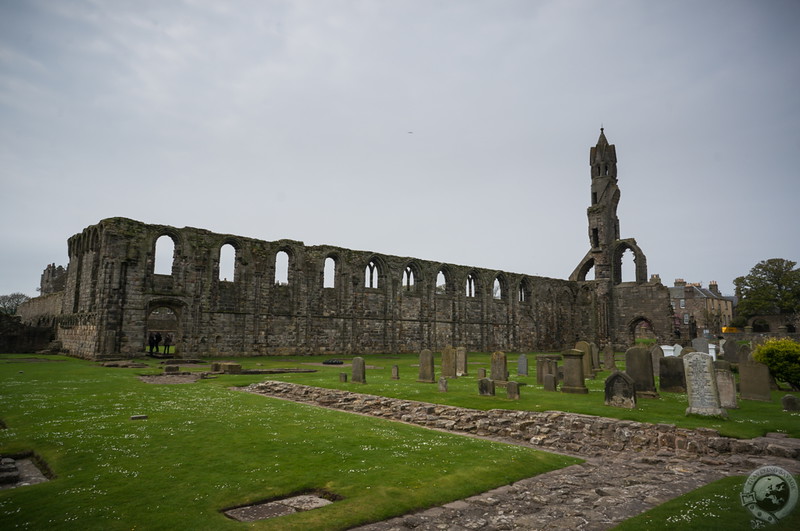
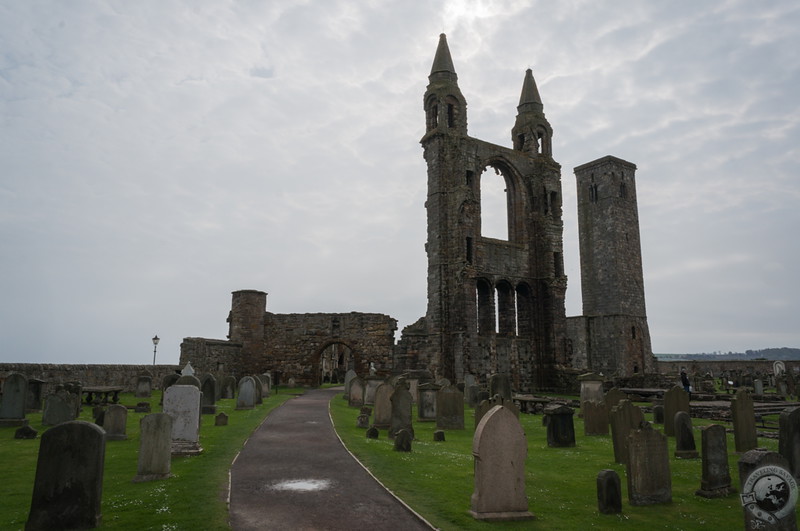
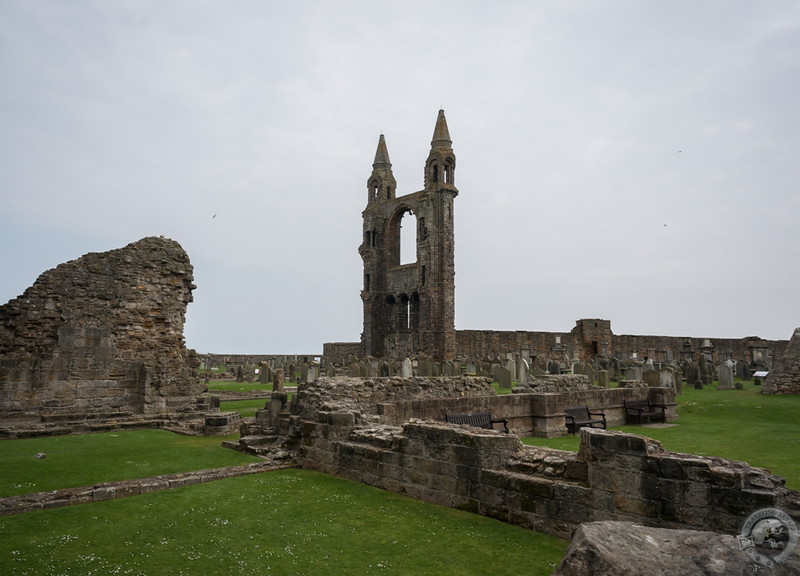
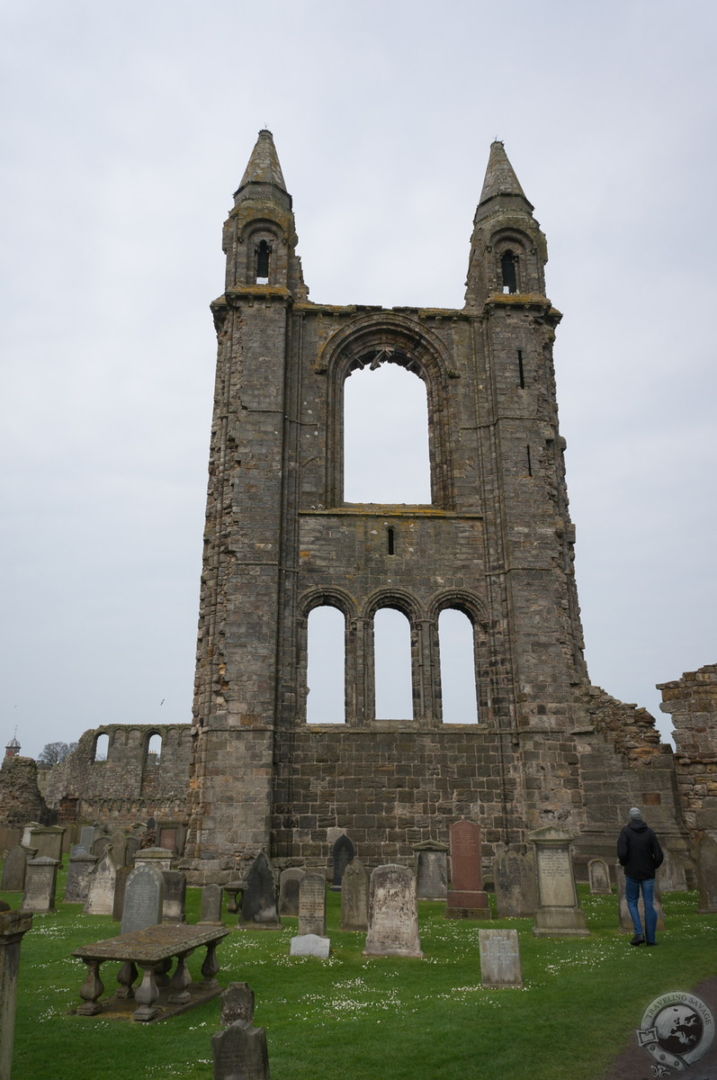
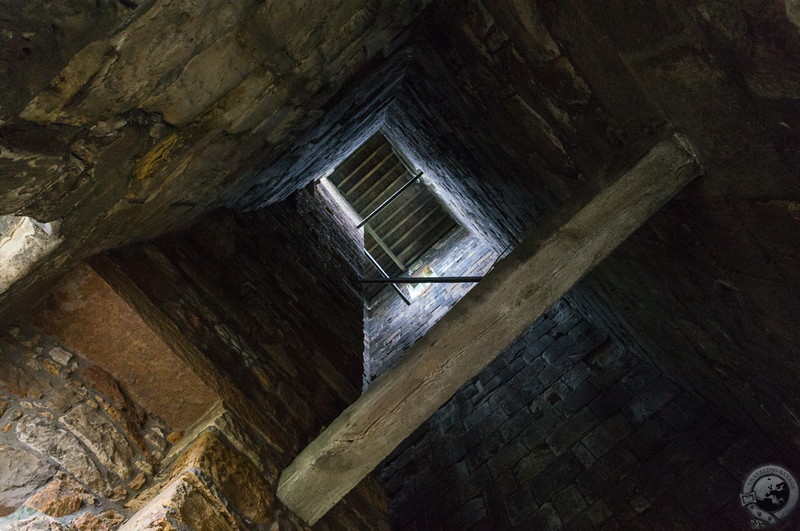
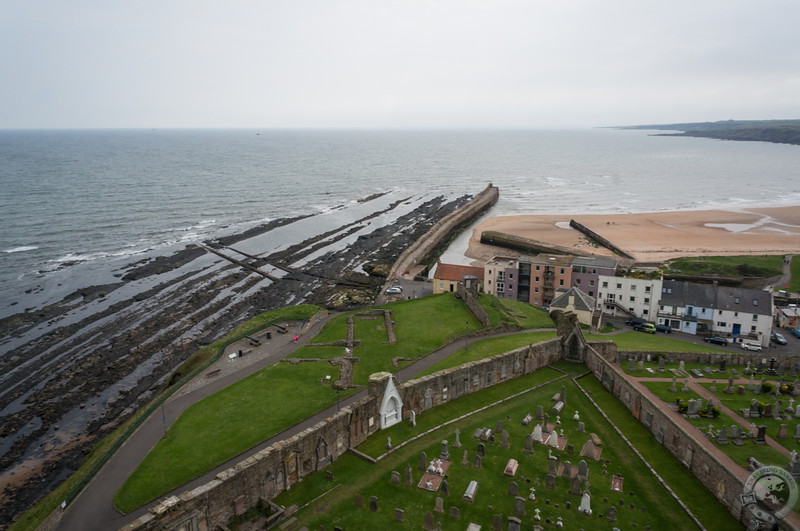
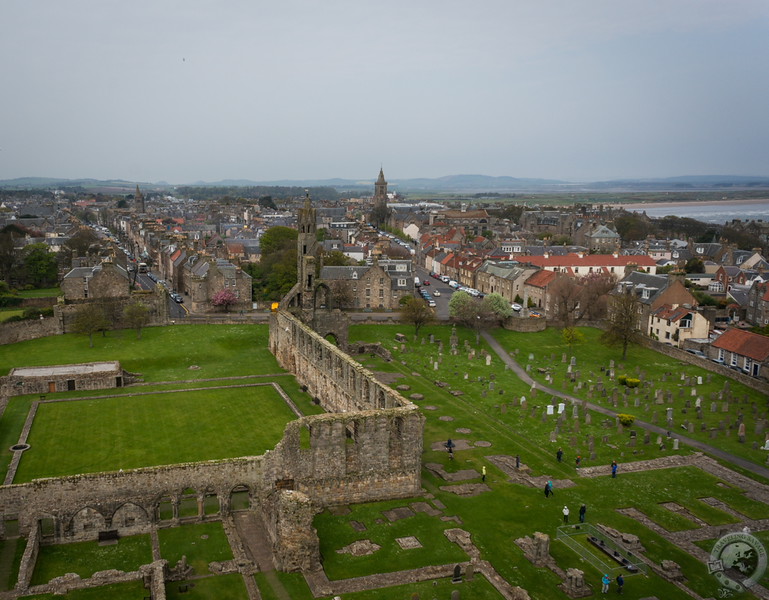
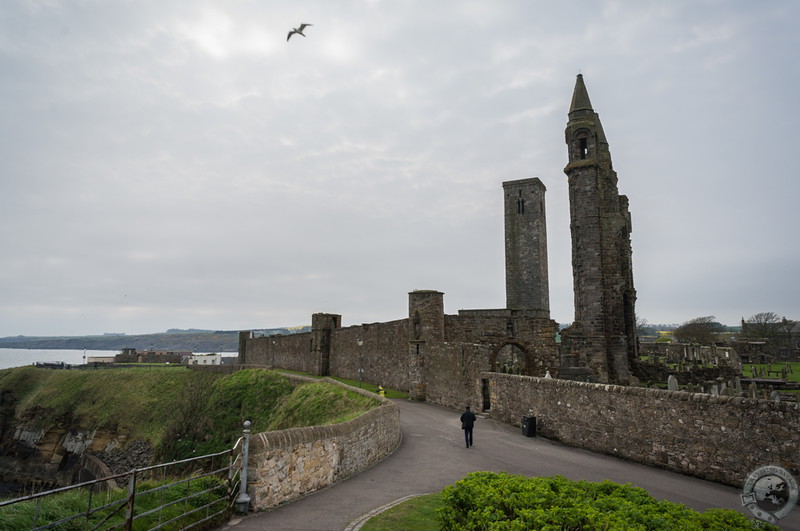
[…] home to the third-oldest English-speaking university in the world, a beautiful 11th-century ruined cathedral, and, of course, the game of golf. Here you’ll find scads of university students, good pubs, […]
I had the opportunity to check out these ruins this past summer. Amazing. The sheer size of the place is overwhelming. I could only imagine how stunning it was in its heyday so many centuries ago.
I feel that way about so many places in Scotland. The wonder never stops.
Keith, thanks for this post! I am interested in the early church at the site, St. Rule’s tower. From what I can learn, the tower was constructed in the 11th century. Do you by any chance know when in that century?
Hi Regan, I’ve looked through my photos of the placards at the church, but nowhere does it say when, exactly, the tower was built. Sorry!
No worries. Actually I think there is some confusion as to when the tower was built but the proper timeframe seems to be the 12th not the 11th century, though there was a prior church there before.